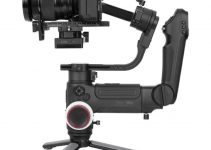Text tracking is a conventional technique to make a non-diegetic element belong as if it’s an integral part of your edit. This can be seen in films such as those directed by David Fincher, or in the opening titles to movies like Easy A. Not only that, text tracking is perfect when you want to add a unique visual aesthetic to your video – whether it be a commercial project, documentary or even a feature film.
As complicated as the technique may initially seem, compositing platforms such as Adobe After Effects have made tasks like text tracking very easy to pull off, with the help of the built-in 3D Camera Tracker. Seasoned video editor Kyler Holland will walk us through this specific creative workflow in the next video.
To start off, you’ll need to import your footage into After Effects CC and add the clip into a new composition. Next, head over to the Effects and Presets panel and search for the 3D Camera Tracker. Once you apply the effect to your footage After Effects will then go frame-by-frame, analyzing the suggested clip. Depending on the size and duration of your video, the time for this process to complete will vary.
Once the tracking is done, you will see several colorful points in your footage. Go into the Effects Controls and increase the Track Point Size to get a better view of the newly generated track points.
As you hover over your clip in the composition window, you’ll see red targets appear in front of the track points. These are essentially planes (or “surfaces”) detected by the software, which give you a visual guide as to how an object would be oriented when attached to the specific plane.
In this particular case, Holand decided to track his footage using a plane that perfectly covers the front of the ledge present in the clip. To do this, you’ll need to hover over the processed footage until you found a suitable plane, then right click and select Create Text and Camera. As a result, After Effects will create the two objects and add it to the composition.
Once the text and camera layer has been created, you’ll see that the text matches the motions of the camera. The next step would be to customize the context of the text layer, then adjust the position, scale and rotation of the text so that it looks as if it belongs in its environment.
Lastly, to make the movement of the text seem more natural, you can enable motion blur for both the composition and text layer. If you want to adjust the amount of motion blur in the scene, you can do this by tweaking the Shutter Angle under the advanced settings in the Composition Settings window.
[source: Kyler Holland]
Disclaimer: As an Amazon Associate partner and participant in B&H and Adorama Affiliate programmes, we earn a small comission from each purchase made through the affiliate links listed above at no additional cost to you.
Claim your copy of DAVINCI RESOLVE - SIMPLIFIED COURSE with 50% off! Get Instant Access!




